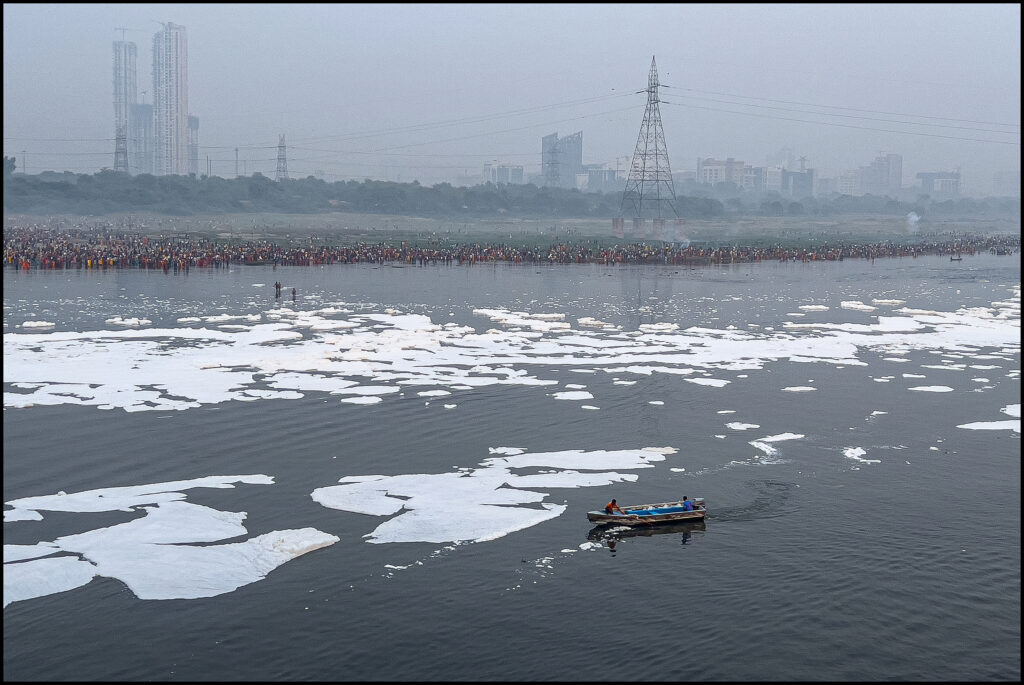
Devout people crowd near the bank of Yamuna river
Photo Essay – Faith amidst the foam: Chhath Puja on the banks of Yamuna
Text and images by Vijay S. Jodha
Chhath Puja, a festival deeply rooted in the traditions of Bihar and eastern Uttar Pradesh, has been gaining popularity in Delhi, particularly along the banks of the Yamuna River.
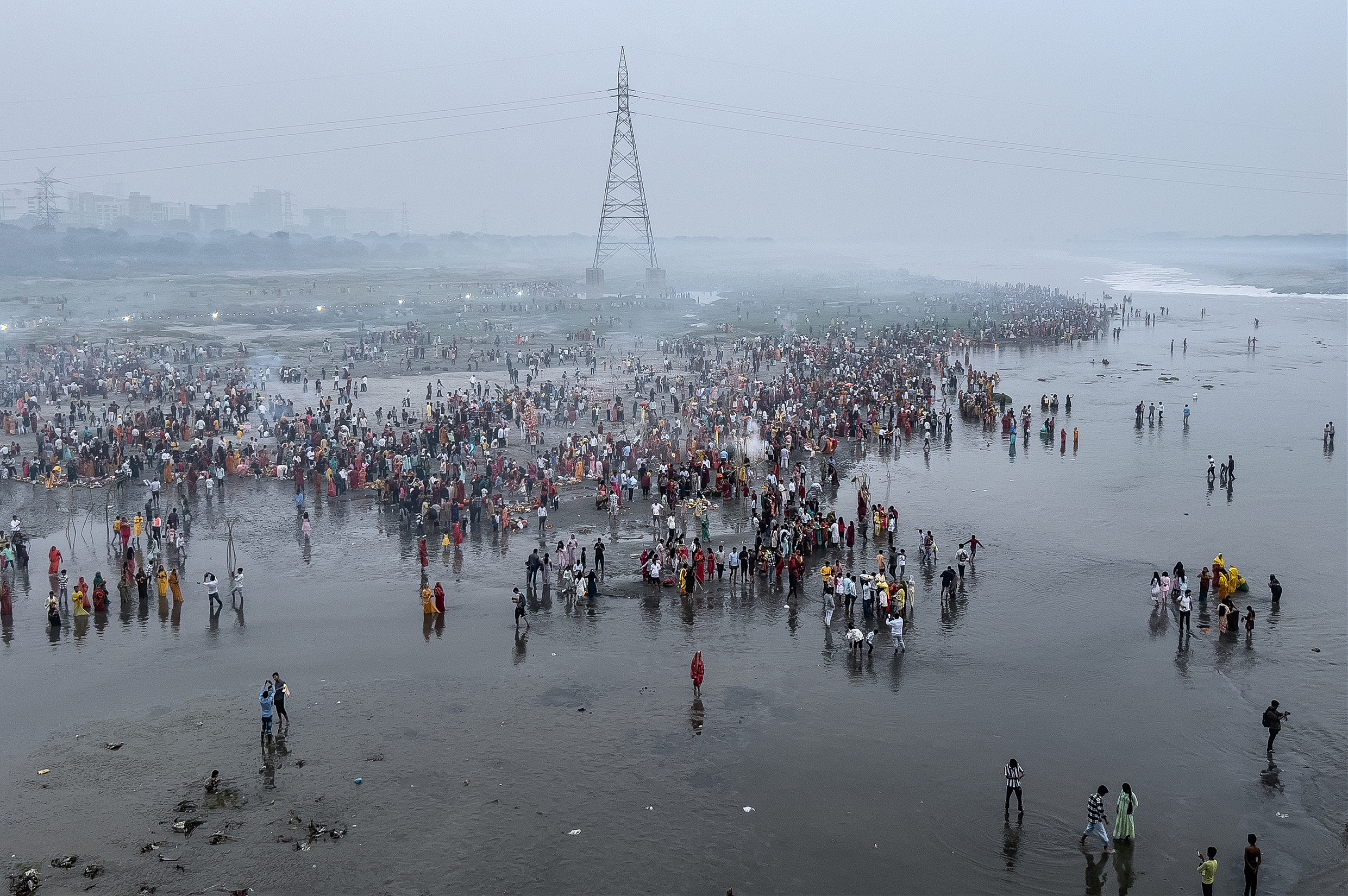
This four-day festival is dedicated to the Sun God – Surya Dev, and Chhathi Maiya, the sixth form of Prakriti and Surya’s sister.
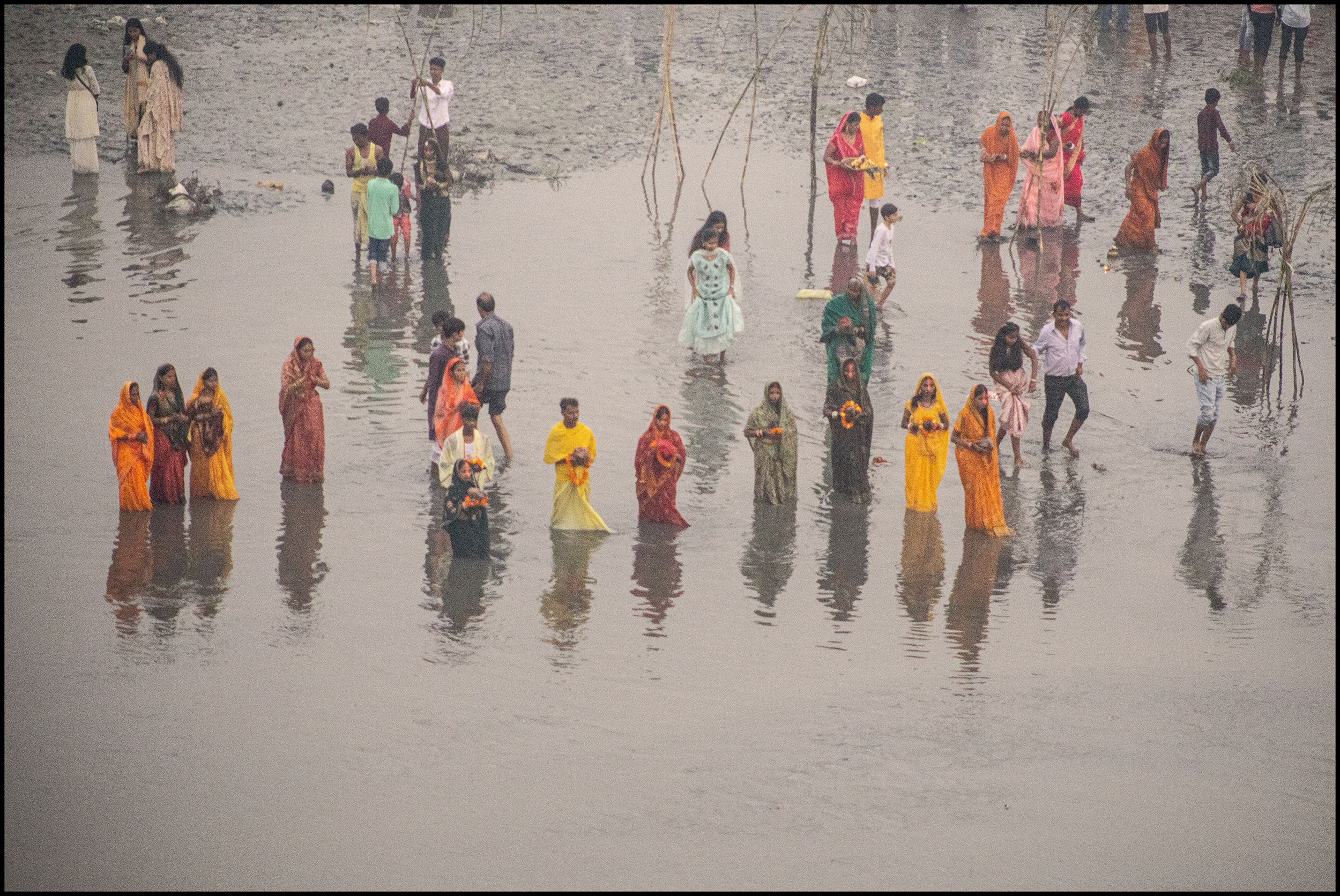
Devotees, many of whom have migrated from their home states, observed strict fasting and perform elaborate rituals at dawn and dusk. They offered prayers, fruits, and other offerings to the setting and rising sun, seeking blessings for prosperity, health, and well-being.
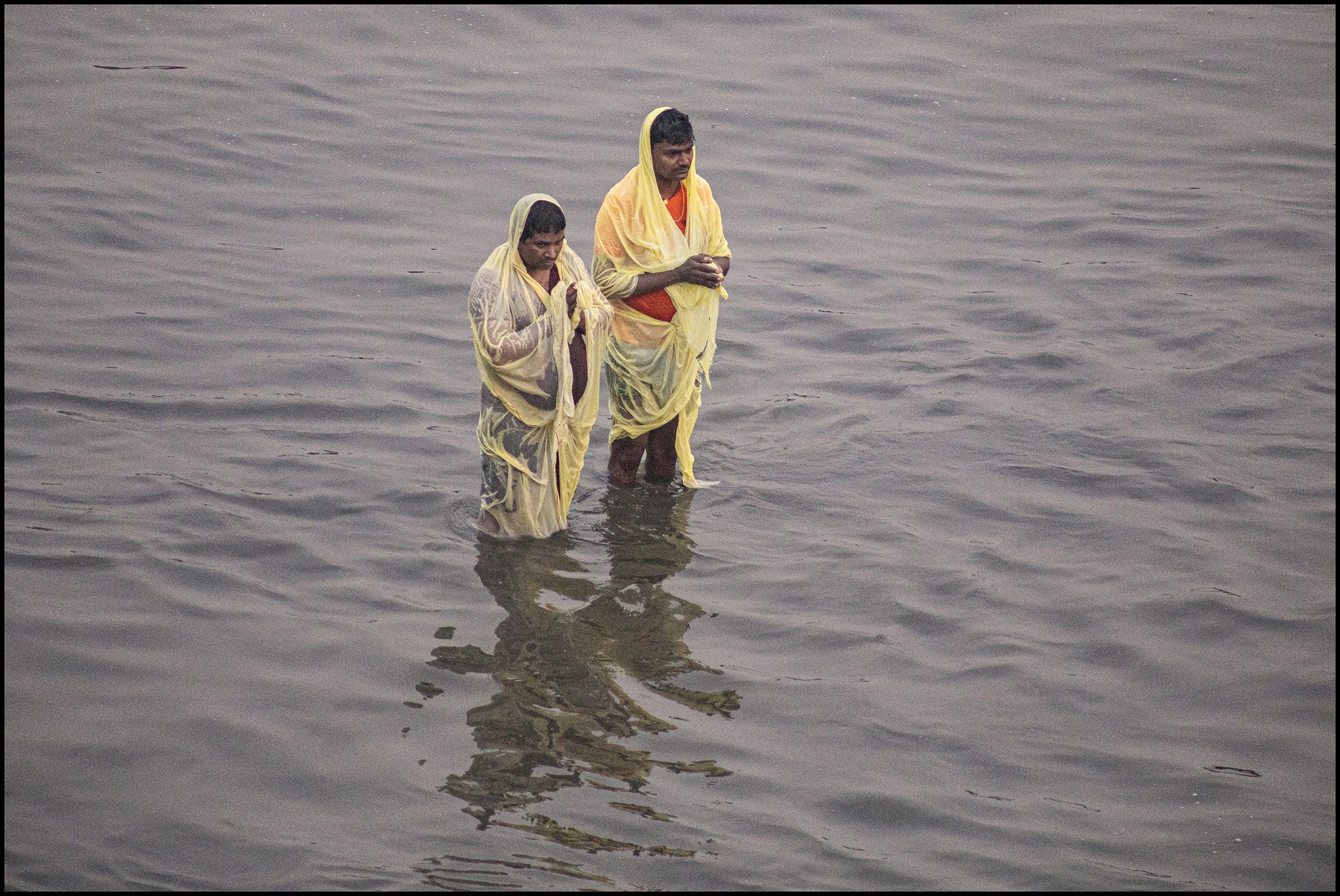
Just before the Chhath festival, the Delhi High Court rejected a public interest litigation (PIL) petition seeking permission to perform Chhath puja on the banks of the Yamuna River. Despite the Yamuna’s severe pollution, the river’s spiritual significance remained strong for these devotees. They gathered at various ghats, braving the polluted waters to fulfil their religious obligations.

The sight of thousands of devotees, adorned in traditional attire, performing rituals under such challenging conditions, creates a unique and awe-inspiring spectacle. However, the increasing pollution of the Yamuna raises serious concerns about the health and safety of the devotees. Environmental activists and concerned citizens urged authorities to take immediate and effective steps to clean up the river and ensure a safe and healthy environment for future generations to celebrate this sacred festival.
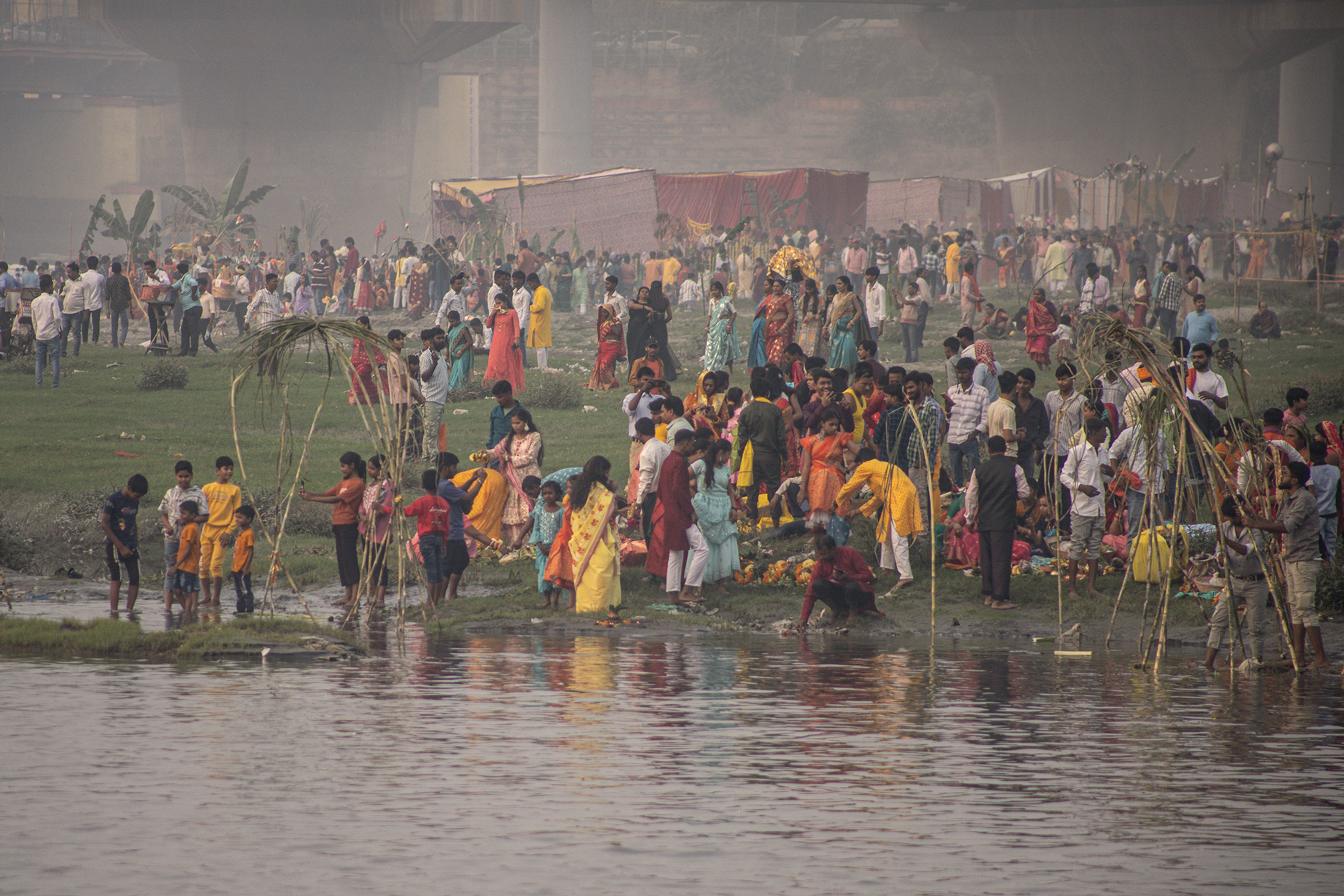
Sugarcane, symbolizing purity and prosperity, is an integral part of the Chhat Puja decorations. Devotees offered sugarcane to the Sun God and decorate their homes and puja thalis with it.

The lit diya, or earthen lamp, carried back from the riverbank after the final ritual, is believed to bring blessings and prosperity to the household.
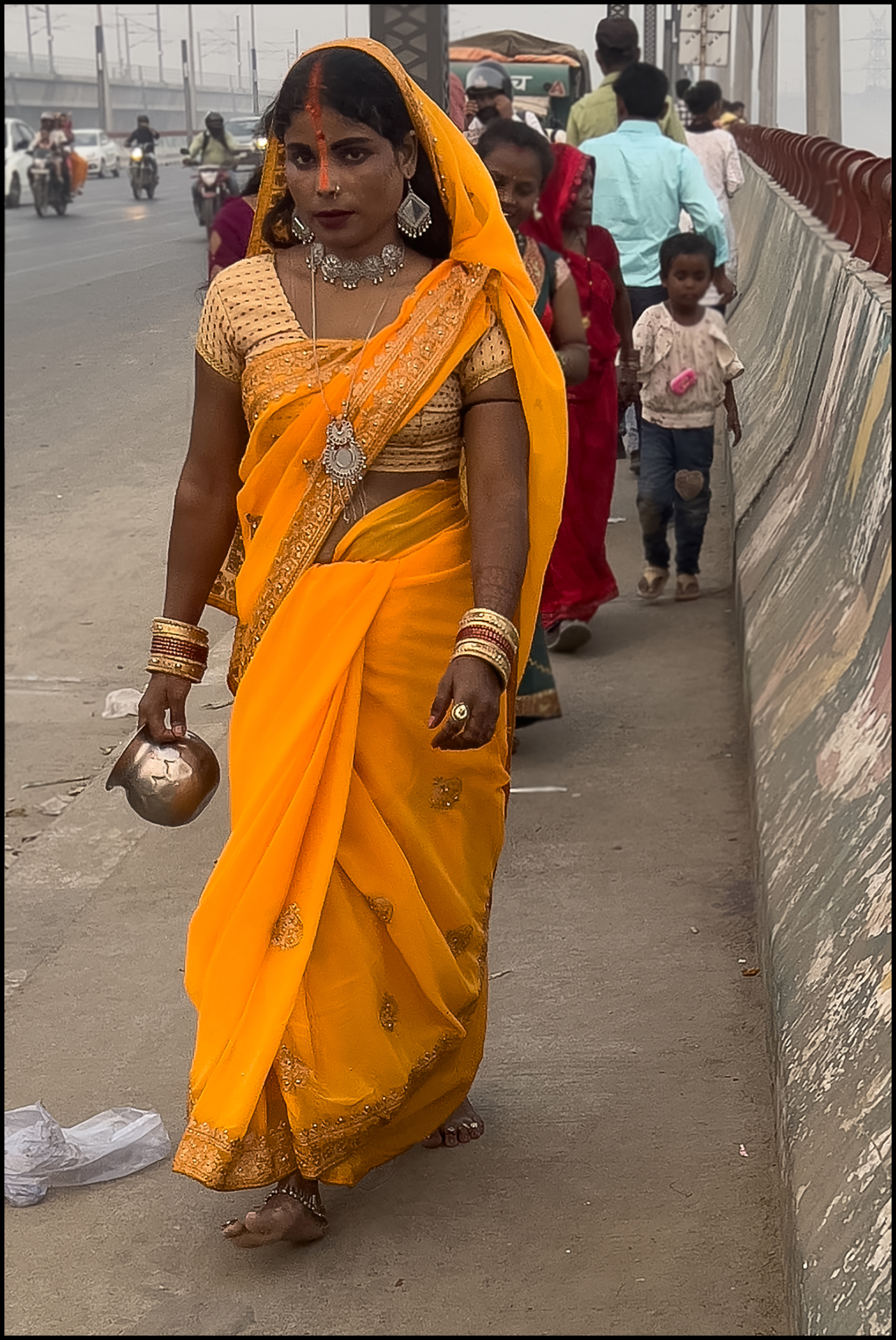
Over the past decade, the Yamuna River has faced severe pollution due to industrial effluents, untreated sewage, and solid waste. The river’s water quality has deteriorated significantly, affecting aquatic life and posing serious health risks to the people living along its banks. Despite numerous efforts and significant public expenditure, the situation remains alarming.
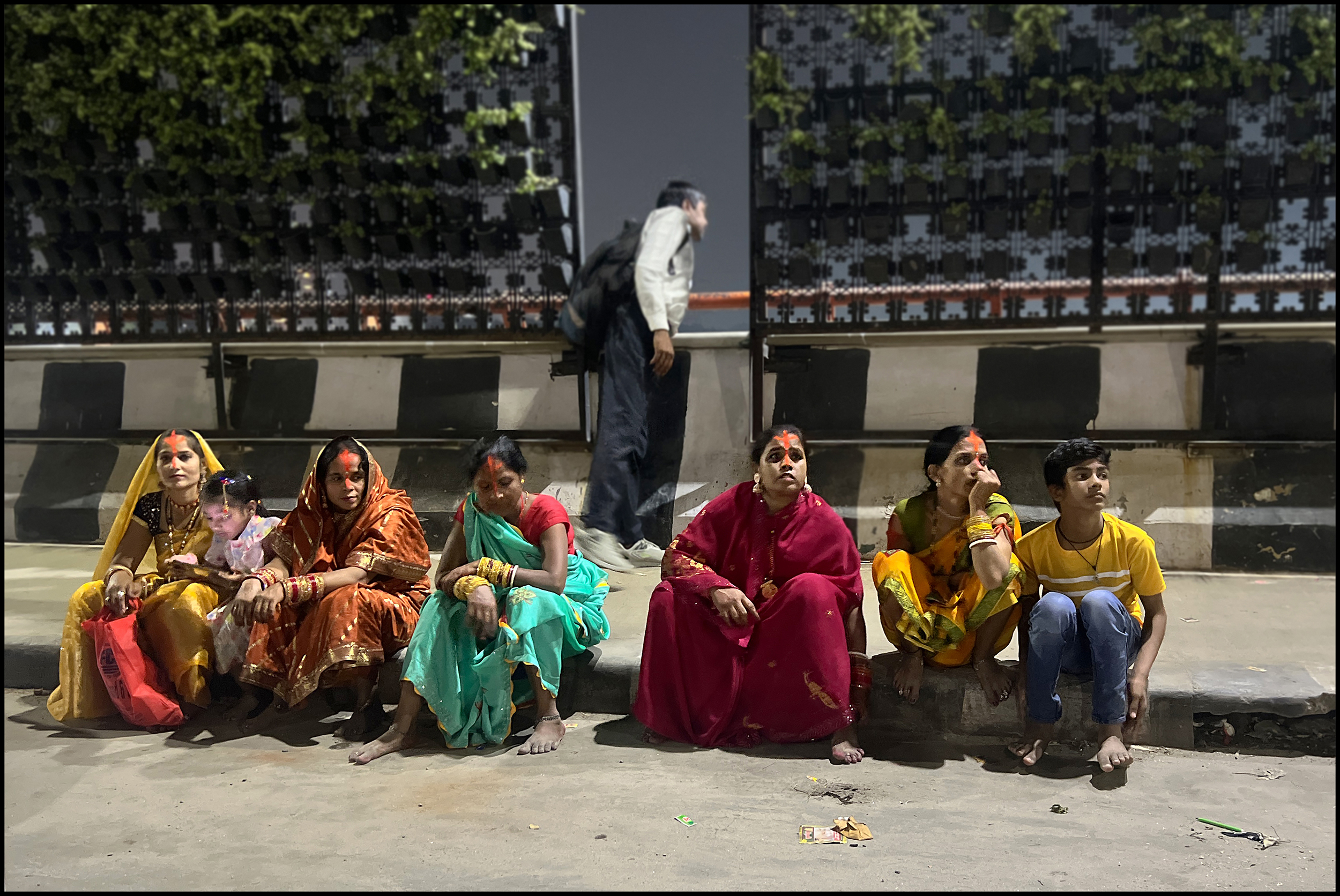
As seen in these images from the area that separated Delhi from Okhla, the river is often covered in toxic foam and choked with pollutants. The contrast between the river’s spiritual significance and its current state could not be more stark or distressing for devotees and casual visitors to the Indian capital’s only river.







Wonderful narrative by Vijay Jodha
Interestingly put together! While there’s pollution and environmental issues, yet India being a densely populated country with a rich and varied cultural heritage, faith certainly prevails over all odds. Also with internet and social media’s easy access, some specific geographic and/or religious pujas and rituals that were earlier limited to the specific areas and communities are now celebrated with a lot more fervour and traditions across geographies. I wonder if we as a country need to really curb such practices or just get our act together and take all necessary steps to ensure smooth functioning of our socio cultural festivities by investing better on cleaning of rivers / planting more trees or taking all actions to preserve the environment.
The Yamuna River enters Delhi at Palla Village and exits at Jaitpur. It flows through urban Delhi for about 22 kilometers, from Wazirabad Barrage to Okhla Barrage as we understand the flow of the river
The Yamuna River in Delhi is currently experiencing high pollution levels and toxic foam:
Pollution: The river’s pollution levels are alarming.
Toxic foam: A toxic white foam is floating on the river. This foam is caused by a combination of pollutants and fats from decaying plants. It contains high levels of ammonia and phosphates, which can cause serious health issues like skin and respiratory problems.
Dissolved oxygen: The amount of dissolved oxygen (DO) in the river is low at some points, which can harm aquatic life.
Air quality: The air quality in the area is very poor.
Those offering the chat Pooja could also contribute to clean up the river of all the toxins and stop the pollution into the river the NGT seems ignorant of this situation and seems only focused on moving the cars over 10 /15;years off the roads from.NCR and delhi and however the yamuna that was a source of water to Delhi now is gutter that takes the drain hope there is some intervention from.the regulator pollution board that could take some proactive action and save the river for our next generation soom